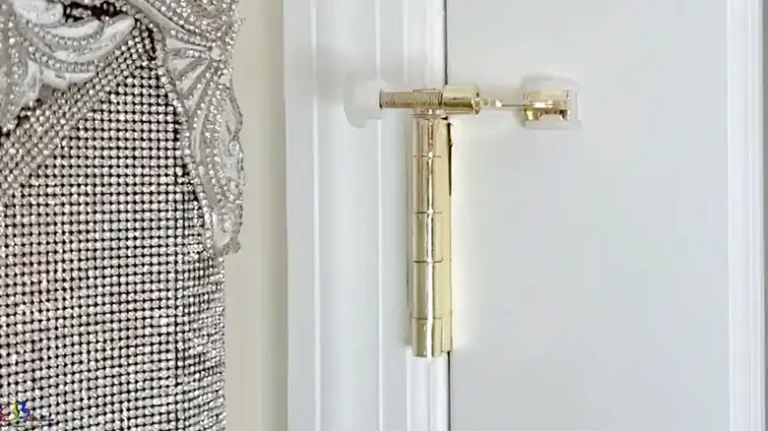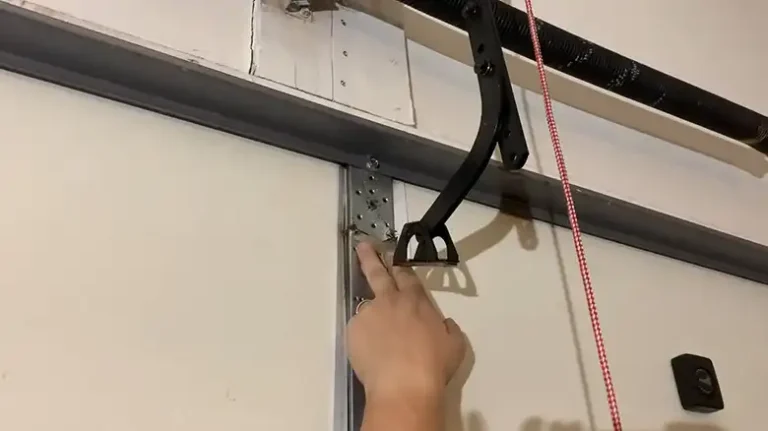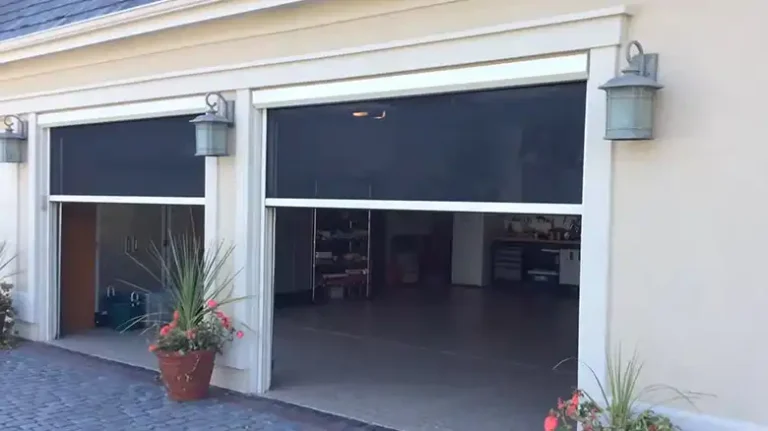How to Install MD Door Seal | An Installing Guide for You
Installing an MD door seal might not be the most thrilling weekend project, but it’s one of those tasks that can make a significant difference in your home. If you’ve been hearing those unwanted drafts whistling through your doors or you’re tired of insects sneaking in, it’s time to roll up your sleeves and learn how to install an MD door seal.
It’s pretty easy work to do, measure the dimensions, cut the seal, and install it around the door.
In this guide, we’ll walk you through the process step by step, and by the end, you’ll be sealing your doors like a pro.

Materials for Installing MD Door Seal
Before you dive into the installation process, it’s crucial to gather the necessary materials. Fortunately, you won’t need a toolbox the size of a truck for this project. Here’s what you’ll need
MD Door Seal Kit
MD door seal kits are readily available at your local hardware store or online. These kits typically contain all the components you’ll need, including the seal itself and adhesive.
Measuring Tape
Precision matters when it comes to sealing doors. A measuring tape will help you get the exact dimensions for your door.
Scissors or Utility Knife
You’ll need something to cut the door seal to the correct size.
Cleaning Supplies
Before attaching the seal, ensure the door surface is clean and free from dust, dirt, or old adhesive residue. You can use a mild cleaning solution and a rag for this.
Steps for Installing MD Door Seal
Now that you have your materials ready, let’s move on to the installation process.
Step 1 Measure and Cut
Start by measuring the width of your door frame. Cut the MD door seal to match this measurement using scissors or a utility knife.
Step 2 Clean the Surface
Thoroughly clean the surface where you’ll be attaching the door seal. Any dirt or debris can affect the seal’s effectiveness.
Step 3 Apply Adhesive
Most MD door seal kits come with adhesive backing. Carefully peel off the protective paper and stick the seal to the door frame. Ensure it’s aligned properly and press firmly to secure it in place.
Step 4 Test the Seal
Close the door and check for any gaps or spaces where air or light might penetrate. If necessary, trim or adjust the seal to eliminate these gaps.
Step 5 Final Adjustments
Make sure the door opens and closes smoothly without any interference from the seal. If needed, trim any excess material.
Tips and Precautions for Installing MD Door Seal
Here are some additional tips and precautions to ensure a successful installation
- Double-Check Measurements – Measure twice, and cut once. Precision is key to a snug fit.
- Don’t Rush – Take your time during each step to ensure the seal adheres properly.
- Smooth Application – Use a flat tool or your hand to press the seal firmly onto the door frame.
- Replace Old Seals – If you’re replacing an old seal, remove any residue from the previous adhesive before applying the new one.
- Weatherproofing – MD door seals can also help with weatherproofing. Consider installing them on exterior doors to keep the elements out.
- Maintain the Temperature – The working temperature must be above 20°F or -7°C.
- Use Weatherstripping Snugly – Use it against the surfaces on both sides as the material can be compressed when the door is shut.
- Try to Use Continuous Weatherstrip – Avoid using multiple pieces of weatherstrip. Always go for continuous at each side.
- If you are installing the MD door seal on a metal door frame, you may need to use a heat gun to warm up the adhesive before applying it. This will help the adhesive to adhere to the metal surface.
- If you are installing the MD door seal on a wood door frame, be sure to clean the surface with a damp cloth before applying the adhesive. This will help to remove any dirt or debris that could interfere with the adhesive’s bonding.
- Once you have applied the MD door seal, it is important to give it at least 24 hours to cure before using the door. This will ensure that the adhesive is fully bonded to the door frame and that the seal is working properly.
Bonus Tips – Different Types of MD Weatherstrip
Here are some different types of weatherstrip that you can use for your door.
| Type | Where It Works Best | Price | Pros | Cons |
| Tension Seal | Inside windows and doors, | medium to high | Durable, works well, not visible | Can be hard to install, and requires smooth surfaces |
| Felt | Around doors and windows, | Low | Easy to use, affordable | Not very durable, and not great at stopping drafts |
| Reinforced Foam | Stops for doors and windows, top/bottom of windows, door bottoms | Moderately low | Good at sealing, sturdy | Can be tough to install, visible, and has an environmental impact |
| Tape | Window frames, door frames, attic hatches | Low | Very easy to use, low cost, can be reinforced | Durability varies, not great for heavy wear, visible |
| Rolled or Reinforced Vinyl | Stops for doors and windows, top/bottom of windows, door bottoms | Low to medium | Easy to install, comes in different colors | Visible |
| Door Sweep | Bottom of doors, especially exterior doors | medium to high | Fairly easy to install, can adjust for uneven floors | Visible, may drag on carpets, automatic versions cost more |
| Magnetic | Tops and sides of doors, window channels | High | Very good at sealing gaps | None |
| Tubular Rubber and Vinyl | Around doors | medium to high | Effective barrier against air | Self-stick versions can be tricky to install |
| Reinforced Silicone | Doorjambs or window stops | medium to high | Seals well | Tricky installation requires tools |
| Door Shoe | Underneath doors | medium to high | Sheds rain, durable, adjustable | Somewhat expensive, moderately difficult to install |
| Bulb Threshold | Door thresholds | medium to high | Combines threshold and seal | Wears down from foot traffic, relatively costly |
| “Frost-Brake” Threshold | Beneath doors | medium to high | Reduces cold transfer | Moderately challenging to install, involves replacing the threshold |
| Fin Seal | For sliding windows and glass doors | medium to high | Very durable | Can be difficult to install |
| Interlocking Metal Channels | Around door frames | High | Exceptional weatherproofing | Very challenging to install, requires professional help |
People Also Ask – PAA
Can I use MD door seals on exterior doors?
Absolutely! MD door seals are versatile and work well on both interior and exterior doors to keep out drafts, insects, and moisture.
How long does an MD door seal typically last?
The lifespan of an MD door seal depends on factors like usage and exposure to the elements. Generally, they can last for several years before needing replacement.
Can I paint over an MD door seal to match my door?
Yes, you can paint over the seal to match your door’s color. Just make sure to use paint that adheres well to rubber or vinyl.
Is it possible to reuse an MD door seal if I need to remove it temporarily?
While it’s possible to remove an MD door seal, the adhesive may lose some of its effectiveness upon reinstallation. It’s best to have a new seal on hand for such situations.
Can MD door seals reduce noise from outside?
Yes, MD door seals can help reduce noise transmission, providing a quieter and more peaceful environment indoors.
Conclusion
Congratulations, you’ve mastered the art of installing an MD door seal! With the right materials and a bit of patience, you can significantly improve the energy efficiency and comfort of your home. Say goodbye to drafts, pests, and unnecessary energy bills. If you have any questions or need further assistance, don’t hesitate to leave a comment below. Your well-sealed doors are just a few steps away, and your home will thank you for it. Happy sealing!
![[Answered] How Long Does It Take to Put in a Front Door](https://doorsuggest.com/wp-content/uploads/2023/10/How-Long-Does-It-Take-to-Put-in-a-Front-Door-768x431.webp)


![[2 Methods] How to Run a Cable Around a Door Frame?](https://doorsuggest.com/wp-content/uploads/2023/10/How-to-Run-a-Cable-Around-a-Door-Frame-768x431.webp)

![[Explored] How to Seal Door Threshold to Concrete?](https://doorsuggest.com/wp-content/uploads/2023/09/How-to-Seal-Door-Threshold-to-Concrete-768x431.webp)